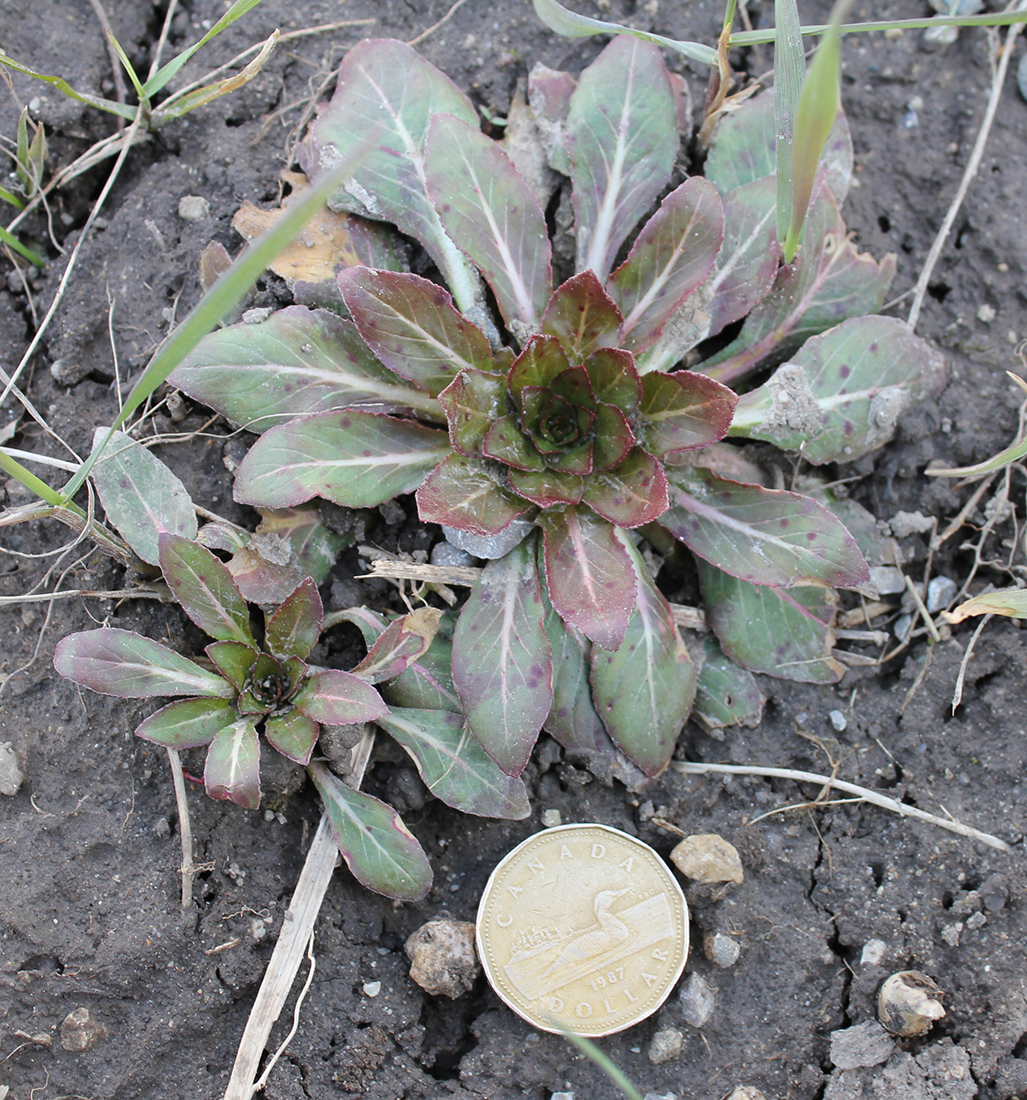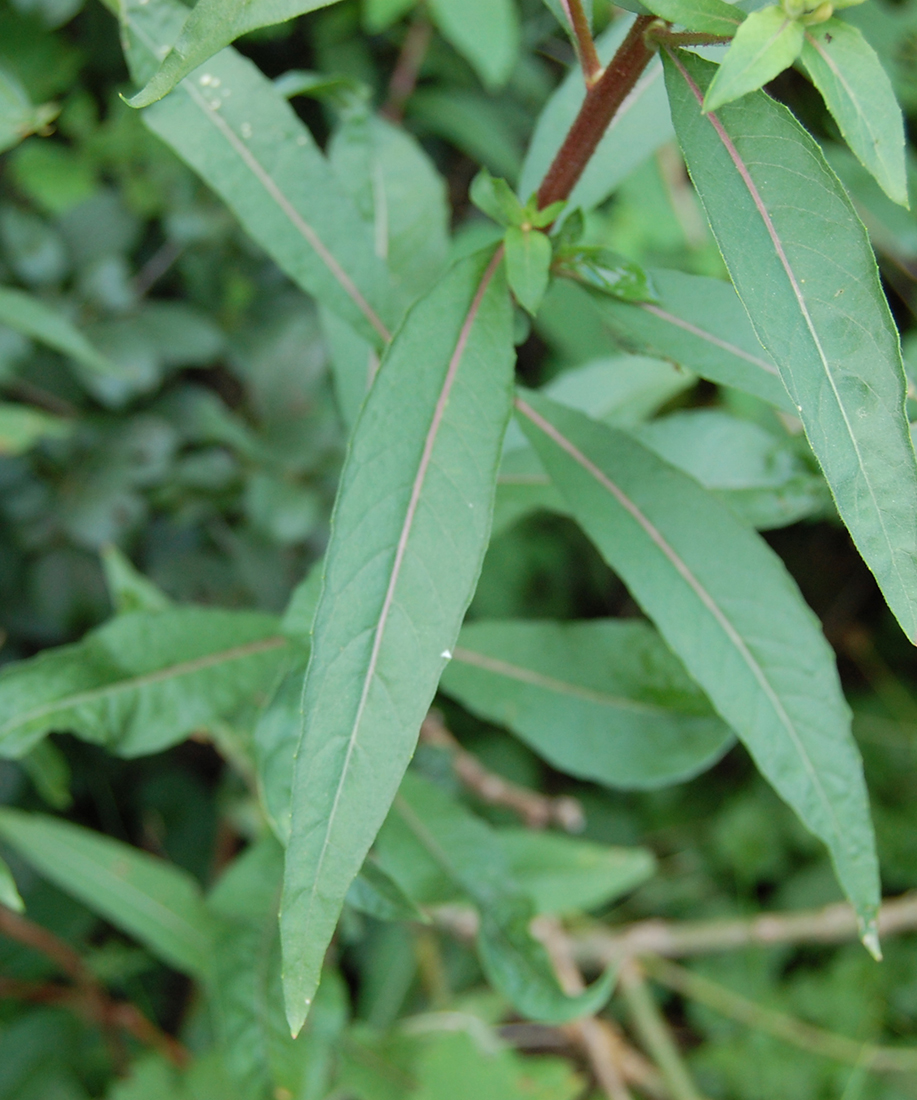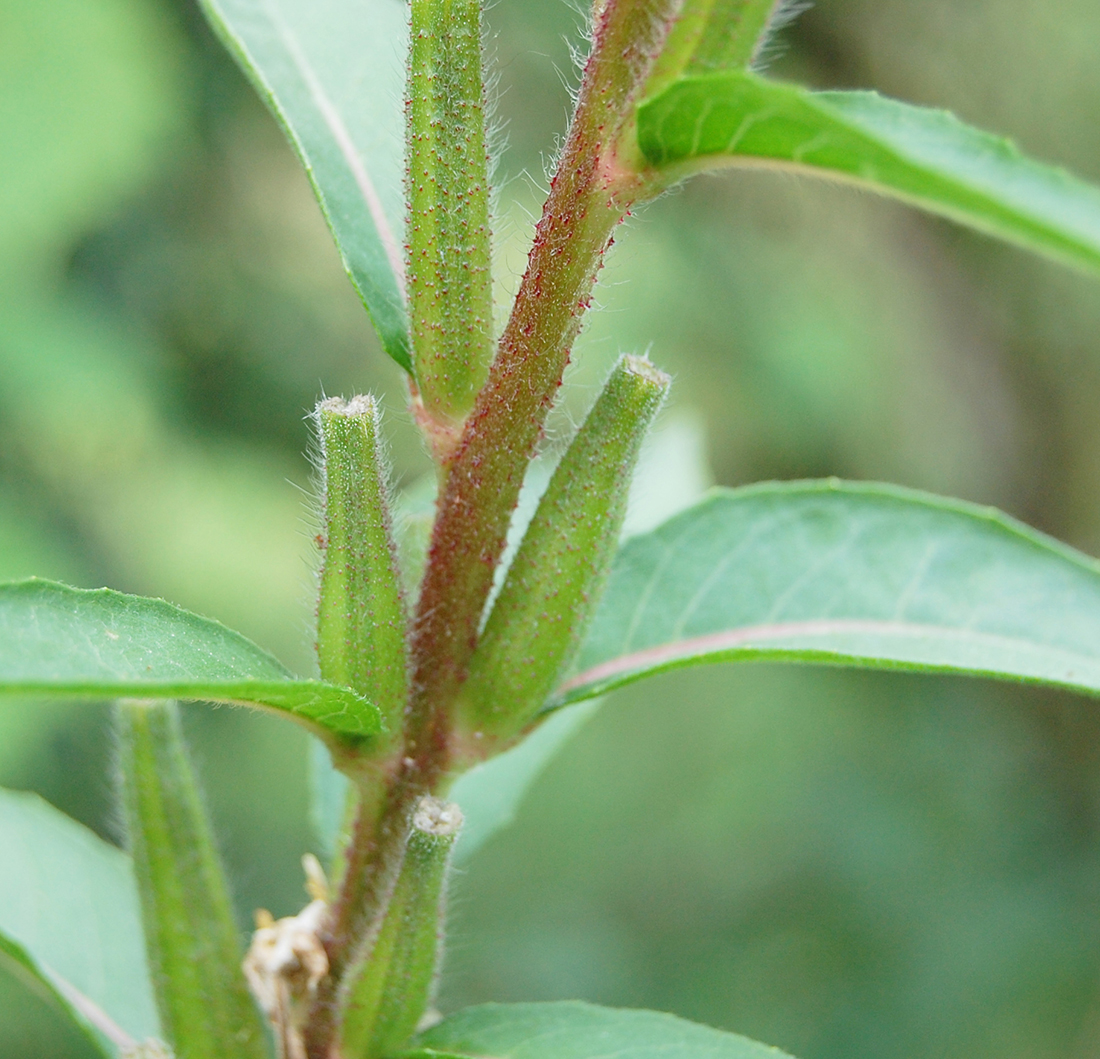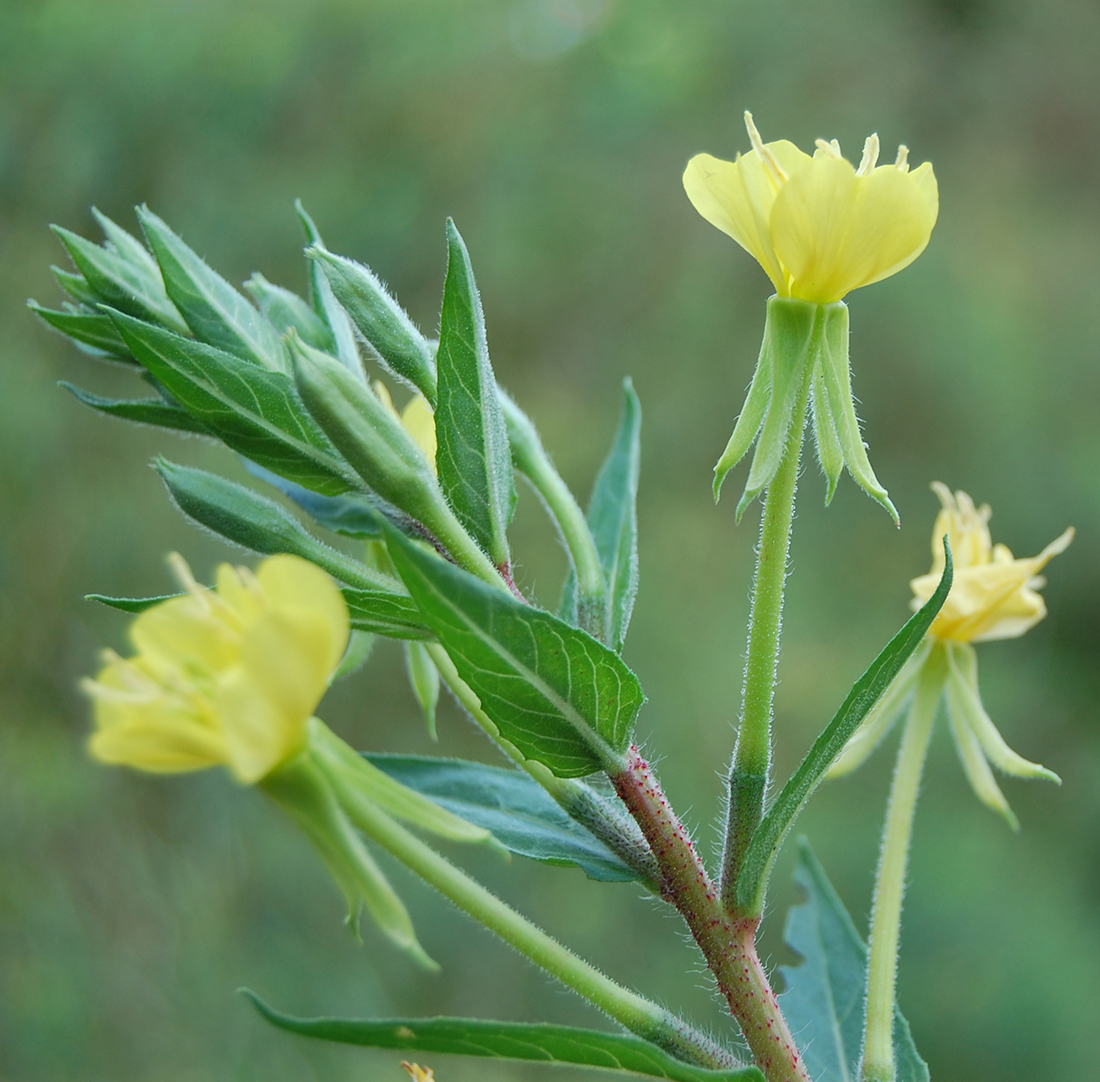Yellow Evening Primrose
- Evening-primrose (Onagraceae family):
- Oenothera biennis L.
- EPPO code:
- OEOBI
- Other names:
- Common evening-primrose, evening-primrose
Species information
- Lifecycle:
- Biennial or short-lived perennial.
- Propagation:
- Reproduces by seed.
- Emergence:
- According to Hall et al. (1987), seeds do not germinate if placed deeper than 5 mm in the soil. Seeds prefer warm soils, so peak germination likely occurs in late spring to early summer.
- Habitat:
- Yellow evening-primrose is found throughout Ontario, but most commonly on roadsides, in waste areas and pastures, and more recently in crop fields under no-till production.
- Competitiveness:
- No data exits on the competitiveness of yellow evening-primrose.
Identification clues
Seedling
- Cotyledons:
- Rhomboid, very small (100 mm), with a stalk the same length.
- Young leaves:
- Grows initially as a basal rosette. The rosette leaves are spoon-shaped with a prominent primary vein that is white and often tinged with pink or red. Sometimes with red blotches near the tip.
- Mature leaves:
- Stem leaves are alternate, narrow, long and have a pointed tip and prominent veins.
Mature plant
- Stem:
- The weed’s stem is erect and grows up to 2 m in height. It is branched at the base, hairy, and green with a reddish tinge or red spots.
- Flowers:
- The flowers of yellow evening-primrose have four large yellow petals with four narrow greens sepals underneath that originate from the leaf axil. They form a dense terminal spike.
- Fruit and seeds:
- Has long, cylindrical seed pods that are green, hairy and covered in red spots. The inside is divided into four chambers, each of which contains several irregular-shaped, reddish-brown to black, rough-surfaced seeds that are roughly 1.5 mm long.
- Roots:
- Taproot
Note of interest
Traditionally, the young leaves and taproot have been consumed as a cooked vegetable (Hall et al., 1987).




Updated: January 13, 2023
Published: January 13, 2023